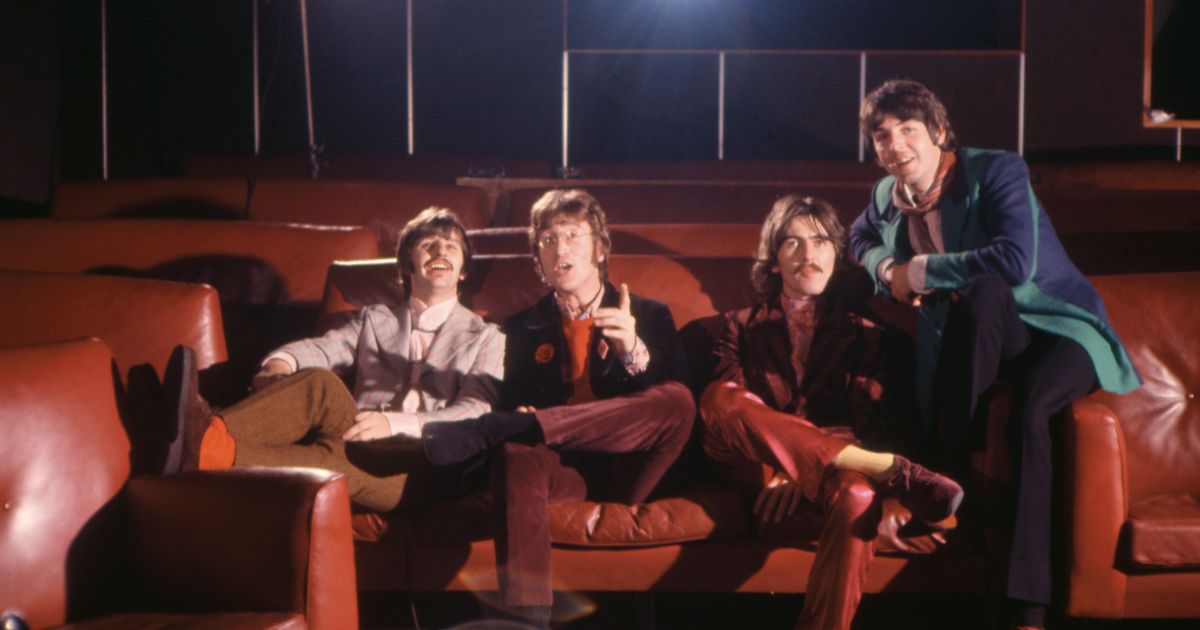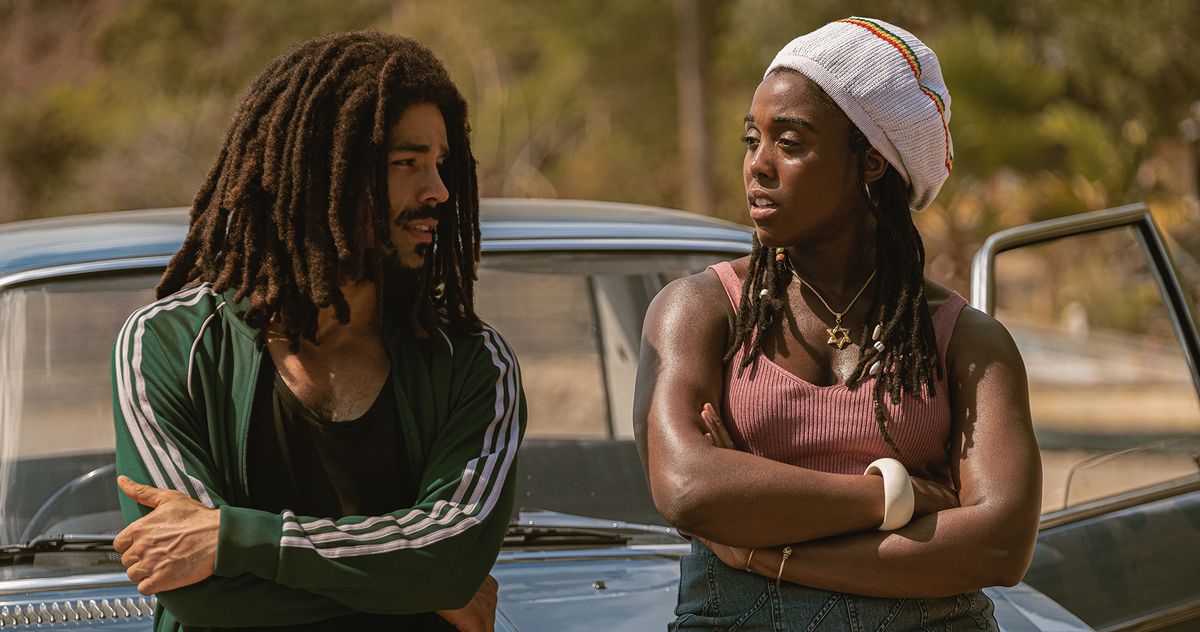The many lives of Kate Bush’s Running Up That Hill
The woozy synths, the pummelling percussion, that dreamy/nightmarish vocal with its inscrutable first line, “It doesn’t hurt me…Ye-yeah, yeah, yo”. When Kate Bush’s record label heard Running Up That Hill for the first time in early 1985 they weren’t sure they had a hit on their hands.
Quite the opposite: they wanted the balmier Cloudbusting for the lead single from Bush’s fifth album, Hounds of Love. But, almost a decade into her career, Bush knew what she was about. And she understood Running Up That Hill was special – even when it went by its original name, A Deal With God (the label wanted that changed too).
Thirty-seven years later, Running Up That Hill has climbed the charts all over again. It’s just hit iTunes number one and is all over TikTok thanks to its prominent positioning in series four of Netflix’s Stranger Things (there are an estimated 140,000 Kate Bush-themed videos on the social media platform). Spotify, meanwhile, reports an 8,700 per cent increase in streams of the song from last Thursday to Monday. Running Up That Hill is currently at number four on its global 200 chart, behind Harry Styles and a brace of Bad Bunny belters.
Running Up That Hill is introduced early in the season as the melancholic jam of young goth Max, who listens to it non-stop as she wrestles with the death of her brother Billy. And as Max is drawn into the web of supernatural evil stalking Hawkins, Indiana, the song becomes even more crucial. Finally, in a life or death moment, its cosmic powers come to her rescue.
The real magic, though, is taking place out in the real world, where Gen Z has been introduced to the ethereal power of Bush and of one of her defining smashes. Not that this is Bush’s first viral moment. Every few years, it seems, Running Up That Hill – whether Bush’s 1985 recording and or the 2003 cover by indie rockers Placebo – materialises in the strangest places.
Bush’s original has soundtracked a climactic love scene in Ryan Murphy’s Pose while a remixed version played over the closing ceremony to the 2012 London Olympics. Placebo’s take has, if anything, proved even more ubiquitous, scoring everything from The Vampire Diaries to Big Little Lies via The OC and How To Get Away With Murder. At this rate, it’s going to turn up on one of those new Disney Star Wars shows (Darth Vader was doubtless a huge Kate Bush fan before discovering nu-metal).

With Placebo, Running Up That Hill has solidified their status as every music supervisor’s angst-rockers of choice. In Vampire Diaries, their Running Up That Hill mooches in the background as hero Stefan is accused of preying on the unsuspecting citizens of Mystic Falls. He is wrongly accused of a terrible crime. And while misbehaving vampires were not on Kate Bush’s radar at the time she conceived Running Up That Hill, Placebo’s graceful, gracious take fleshes out the poignancy of the scene. Behold a baroque banger for all seasons.
Bush, who has apparently completed a new project with OutKast rapper Big Boi (according to Big Boi), is indisputably a genius and one of the greatest artists of the Eighties. And a musician whose influence can be heard in everyone from Tori Amos to Florence and the Machine and Billie Eilish.
But what is it about Running Up That Hill that has given it a lifespan beyond that of other Bush hits such as Wuthering Heights or the aforementioned Cloudbusting? And why does the track seem to hit that nostalgia sweet spot so devastatingly?
These are difficult questions to answer. What is beyond argument is that, if ever a song was custom-crafted to set the hairs on the back of your neck tingling, this is it. And that is exactly the function it fulfils in Stranger Things as it conveys in a hugely moving fashion Max’s attempt to journey beyond grief.
The secret to Running Up That Hill may have something to do with its unconventional qualities. It is a love song of sorts, written about Bush’s then partner Del Palmer. Of course, this being Kate Bush, she came at the subject from an offbeat angle – the idea being that Bush wants to temporarily exchange genders with Palmer so that they could see the world from the other’s perspective. Or, to translate it into fluent Kate Bush: “If I only could, I’d make a deal with God/And I’d get him to swap our places”.
“I was trying to say that, really, a man and a woman can’t understand each other because we are a man and a woman,” she explained when Hounds of Love was released in September 1985. “And if we could actually swap each other’s roles, if we could actually be in each other’s place for a while, I think we’d both be very surprised! And I think it would lead to a greater understanding. And really the only way I could think it could be done was either… you know, I thought a deal with devil you know. And I thought, “well, no, why not a deal with God!””
“I think what makes Running Up That Hill so timeless is the unexpected power that emanates from her female voice and the exploration of the possibilities that might arise if we were able to inhabit one another’s bodies, as women and men, if even for a short while,” says Catherine Anne Davies, the Welsh-born multi-instrumentalist who records as The Anchoress, who is a self-professed Kate Bush megafan.
“The driving drums, the weird and wonky lead synth line and then her emphatic delivery of “it doesn’t hurt me” are the perfect opening to a pop song for me. I think the song has so many potential emotional resonances for different people and situations: the plea to a god to “swap our places” for the lost loved one, “you want to know that it doesn’t hurt me” to the women traumatised by her past relationships, “there is thunder in our hearts” to the heartbroken teen. Her lyrical genius is that she leaves just enough unsaid for you to sketch your own story onto the outlines that she lays down.”

“She was fastidious about getting things right,” recalled John Sheahan of The Dubliners in 2020 of his time working on the Hounds of Love sessions. “I remember playing the [tin] whistle. She was saying ‘this is absolutely beautiful but when you get to this note can you just slide up’. She was a real perfectionist.”
And perfectionism combined with an off-beam artistic vision is what made Running Up That Hill. It’s a monster truck of a song – addictive as anything yet weird, too, and a little elusive. Even when you’ve deconstructed the lyrics and read up on Bush’s motivations, it retains that deeply cryptic quality.
Thirty or so years on, it remains hard to pin down. That is perhaps why it keeps turning up in such curious contexts as an Olympics closing ceremony and in a Netflix sci-fi blockbuster. It is a mystery we try to solve every time we listen to it.
Kate Bush’s career is bigger than Running Up That Hill. And it may get bigger yet if that rumoured Big Boi collaboration ever sees daylight. But this is the song of hers that never quite goes away, which feels as if it is always hanging in the ether. And it is likely that when Stranger Things has fallen from fashion and we’ve stopped caring about Eleven and the gang, it will be out there still – haunting our collective consciousness, its spooky melody conjuring ghostly shapes in our imagination.
Season four of Stranger Things is streaming on Netflix now



















































![iFi's GO Bar Kensei Dongle DAC Supports K2HD Technology With Some Samurai Swagger [Updated] iFi's GO Bar Kensei Dongle DAC Supports K2HD Technology With Some Samurai Swagger [Updated]](https://i0.wp.com/cdn.ecoustics.com/db0/wblob/17BA35E873D594/33FF/45A11/QTXOLJR4xDKSNMMk2WlTgjaIlvSgcYpeU1xJzUwIoYs/ifi-go-bar-kensei.jpg?w=768&ssl=1)






























